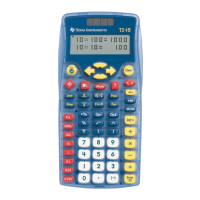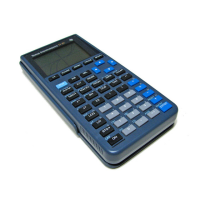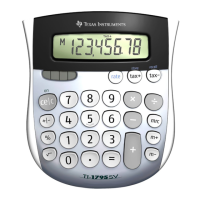Using Lists & Spreadsheet 581
Poisson Cdf (poissCdf()) computes a cumulative probability for the
discrete Poisson distribution with specified mean, l.
This distribution is useful in determining the probability that a certain
number of successes occur between the upper and lower bounds of a
trial. For example, you could use this calculation to predict the number of
heads displayed between coin toss #3 and toss #8.
Geometric Pdf (geomPdf()) computes a probability at x, the
number of the trial on which the first success occurs, for the discrete
geometric distribution with the specified probability of success p. 0{p{1
must be true. x can be an integer or a list of integers. The probability
density function (pdf) is:
This distribution is useful in determining the likeliest number of trials
before a success is obtained. For example, you could use this calculation
to predict the number of coin tosses that would be made before a heads
resulted.
Geometric Cdf (geomCdf()) computes a cumulative geometric
probability from lowBound to upBound with the specified probability of
success, p.
This distribution is useful in determining the probability associated with
the first success occurring during trials 1 through n. For example, you
could use this calculation to determine the probability that heads display
on toss #1, #2, #3, ..., #n.
Confidence Intervals
Supported Confidence Intervals
The following confidence intervals are available from the Lists &
Spreadsheets application. For complete information regarding these
functions, refer to the TI-Nspire™ Reference Guide details for the
function name that is in parentheses.
z Interval (zInterval) computes a confidence interval for an
unknown population mean, m, when the population standard deviation,
s, is known. The computed confidence interval depends on the user-
specified confidence level.
This test is useful in determining how far from a population mean a
sample mean can get before indicating a significant deviation.
fx() p 1 p–()
x 1–
x, 1,2,...==

